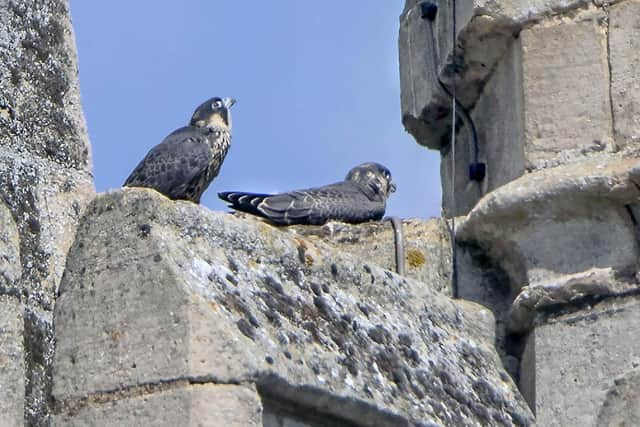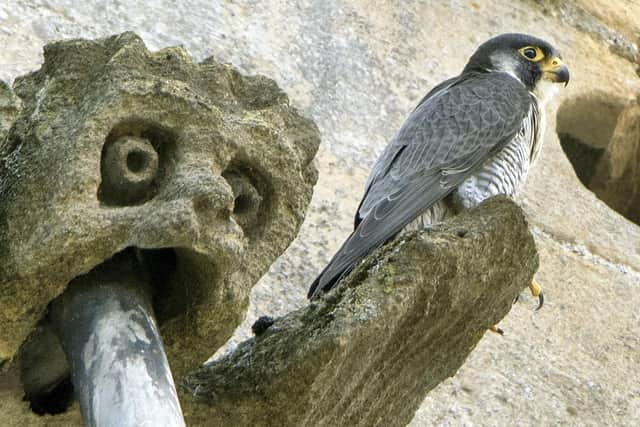Stunning photos of Kettering Peregrine Falcons spotted along with new chicks
and live on Freeview channel 276
You may not have noticed them as they sit camouflaged against the medieval spire of St Peter and St Paul’s Church, but Kettering’s Peregrine Falcons have successfully bred.
The pair have been diligently catching food around the church in Sheep Street, and feeding their chicks a diet of pigeons, garden birds and even ducks.
Advertisement
Hide AdAdvertisement
Hide AdNow the fledglings are ready to fly the nest and have been seen hopping about, stretching their wings among the gargoyles and crenellations – watched over by their parents.


Once persecuted, – Peregrines are a Schedule 1 listed species of The Wildlife and Countryside Act – improved legislation and protection has helped the birds to recover and they have now expanded into many urban areas.
However, they are still persecuted - birds are illegally killed to prevent predation on game birds and racing pigeons. They also have eggs and chicks taken for collections and falconry.
Peregrine falcons are the worlds' fastest animal reaching in excess of 200mph in a dive, which makes them very effective hunters catching their prey in mid-air.


Advertisement
Hide AdAdvertisement
Hide AdAccording to the RSPB, there are now 1,750 pairs breeding in the UK and can be recognised by its long, broad, pointed wings and a relatively short tail. It is blue-grey above, with a blackish top of the head and an obvious black 'moustache' that contrasts with its white face. Its breast is finely barred.
Photographer Glyn Dobbs used his 800mm lens to record the birds in action.